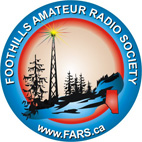As of the time of this post, the VE6FAR Winlink node has had an exciting new upgrade.
Several folks have inquired about this; the node now supports VARA FM. And it still supports packet. This upgrade allows continued 1200 baud AX.25 packet connections, and adds VARA FM in wide mode, allowing much higher speed than before.
If you currently use packet, nothing changes from the way you have been accessing the node. The node ID remains VE6FAR-10. The three digipeaters, VE6HRA-8, VE6HRB-8, and VA6HRH-8, continue to support the large coverage footprint for Winlink packet.
If you’re a VARA FM user, you can enjoy the high speed connection provided by the node.
To use VARA FM, download and install the VARA software from https://rosmodem.wordpress.com, configure it for your sound card and radio, then in Winlink Express, select ‘VARA FM Winlink’ for the session type.
The frequency remains on 431.000MHz.
If you’re new to VARA FM, these next few paragraphs will help get you started.
VARA FM is a ‘sound card’ mode, which does not require a TNC. It can use an external sound card, or a built-in sound card if your radio has one. Your PC or laptop’s built-in sound card is not a good option, by the way, if you’re hoping to get good connection speeds.
Have your manuals handy to help get this running.
Initial VARA FM setup:
The first time you start a Winlink VARA FM session, you’ll need to configure the path to the VARA FM software, and you want it to start automatically when you launch a session.
In VARA FM setup, select ‘WIDE’ as the FM System if your radio and sound card support it, otherwise leave is as ‘NARROW.’
Under Settings->PTT, select the PTT method for your radio. Note that VOX is typically used for many sound card types.
Under Settings -> Sound Card, select the appropriate sound card for both the input and output devices.
Setting audio levels:
Now the cool part. It is crucial to set your audio levels correctly for VARA FM to achieve maximum throughput. This is easily done with the ‘auto-tune’ button. In the ‘Calibrate with’ box, enter VE6FAR, then click the plug icon to start the calibration. It will transmit a series of 10 tones with increasing levels, and the Winlink node will respond with the suggested setting adjustments for your sound card.
Adjust your sound card levels as indicated, then do another calibration. Repeat until you get the ‘stamp of approval.’
Make note of these settings, in case you need to set them back, such as if you connect to some other node. The settings you arrive at are unique to this node.
At this point, doing a VARA ping is not a bad idea. In ‘Ping to’, type in VE6FAR, and click the plug icon. You’ll see the results, including S/N values. Since you were able to successfully auto-tune, this ping should work as expected.
Starting a Winlink session:
Now, in the VARA FM Winlink Session box, select connection type as Direct, and enter VE6FAR.
Note that there is no ‘dash-something’ sub ID for the connection to the VARA FM node.
Then click start. Winlink Express will connect, and collect and/or send your Winlink messages.
If you’ve been using packet in the past, the first thing you’ll notice is the higher speed of this connection. As an example, checking for messages when there are none waiting for you using packet can take 45 seconds or more. With VARA FM, you will see this message check session typically complete in less than 12 seconds.
VARA Licensing:
Does VARA FM need to be licensed? It’s up to you. You can use it without buying a license, but a nag screen pops up when using it, and your throughput speed is limited to 1188 bps.
In our early testing, we routinely saw 12000 to 22000 bps speeds with a licensed version of VARA FM.
Digipeaters:
If you are outside the direct coverage area of the VE6FAR VARA FM node, sadly, our packet digipeaters will not help you. These digipeaters are packet-only, and they do not understand VARA data streams. Their behaviour is to ignore those transmissions, as if they are noise. There are no current plans to deploy VARA FM digipeaters at this time.
Settings Summary:
Frequency: 431.000
Packet node ID: VE6FAR-10
VARA node id: VE6FAR
If you are interested in using VARA FM, set it up, then send a Winlink message to VE6TD telling me you were successful, what sort of throughput you are experiencing, and whether you licensed VARA or not. I’m eager to see how many local amateurs adopt this digital mode for regular and frequent use.
Enjoy.
73
>>Dann – VE6TD
